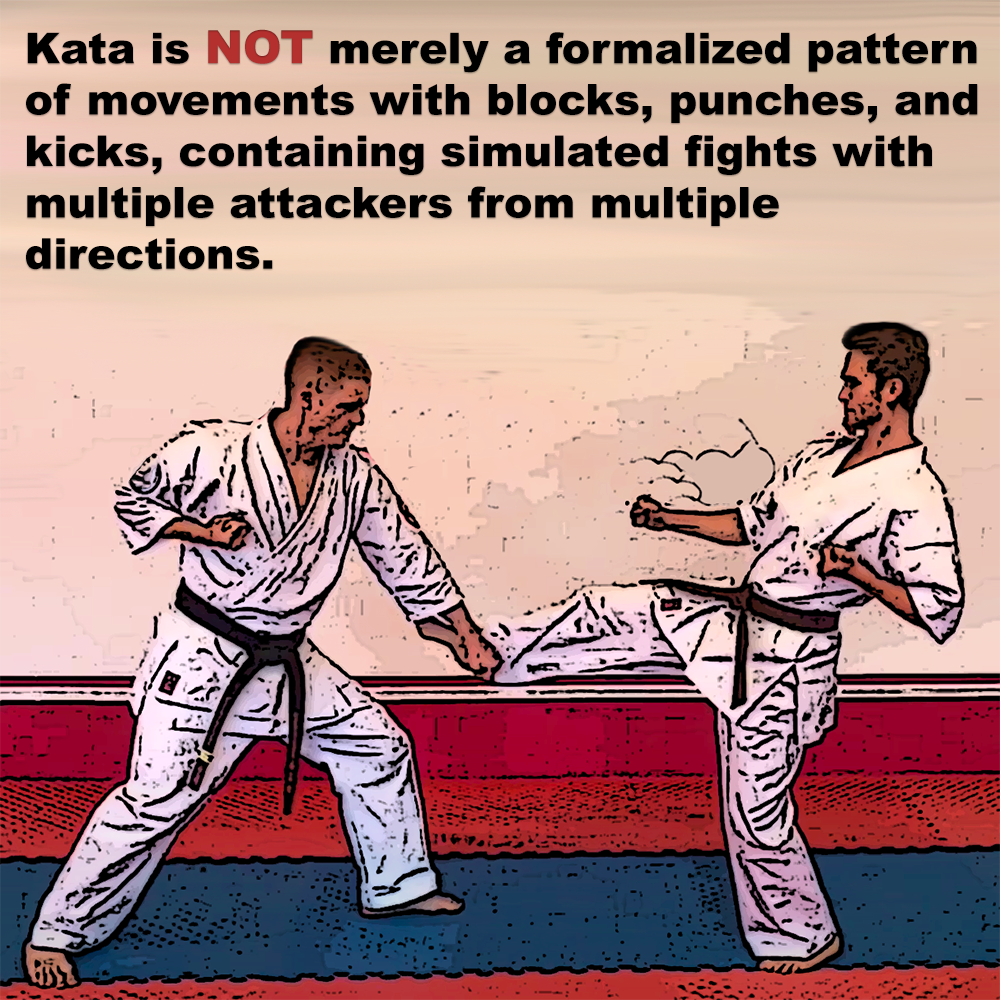
What is karate? Originating on the small island of Okinawa, created for its effectiveness in self-defense. But today, is it sport, self-defense, a way to improve character, a martial art?
.
It can be many or all those things, but for me there has to be a distinction between them all and an understanding which part, fits which process.
.
In the 21st century with all the information available to us all, impractical analysis and application of techniques are still being taught as realistic attack and defense.
.
As an example, I often see instructors teaching kata where the practitioner turn to face multiple attackers, all WAITING in turn for their moment to attack, defending against practitioners from the left, right, back and front… Realistic? No.
.
Stop and think for a moment. Doesn’t this seem absurd to you? Even if your knowledge is lacking in this area, common sense must prevail surely. No one, ever, attacks anyone in this way!
.
How do you know to turn and punch? How do you know the enemy is behind you? And if you do know he is there, why did you let them get behind you? Why are the attackers standing and waiting for their turn?
.
If you turn on the spot to face an attacker, and in the process of doing so expose your back to all the others, then this is not tactically intelligent either.
.
‘Blocks’ are used in ways that they would likely not work well, and so many of these defenses launch a single counterstrike to the solar plexus.
.
There seems to be a belief that the techniques being taught are still effective despite their impracticality, and continue to be taught this way.
.
With the prevalence of social media, video, modern books on the subject, and those teachers who are knowledgable in this area, instructors really have no excuse for this nonsense.
.
And of course this can lead to practitioners developing a false sense of confidence in their ability to defend themselves.
.
Lack of real-world experience, or a belief in outdated training methodology, may be putting students at risk.
.
Karate should include throws, joint locks, and grappling, along with ‘blocking’, striking and kicking.
.
Moving off line, controlling limbs, tactile sensitivity, breaking balance, breaking posture, creating a dominant angle, all are found within kata and should be practiced.
.
If you view the turns in kata, to represent the angle or position people are attacking from, then there is an assumption of failed awareness, poor tactical positioning and even the need for a “sixth sense”, as apparently you can block an unseen attack from behind.
.
Kata is NOT merely a formalized pattern of movements with blocks, punches, and kicks, containing simulated fights with multiple attackers from multiple directions.
.
The problem with this kind of practice is that a real life scenario does not follow a specific pattern with an enemy standing, waiting, on each point of the compass ready to attack you with his perfect stepping punch or kick.
.
Unquestioning belief and devotion to questionable technical efficacy is often a common issue within the practice of traditional martial arts. It is important that you provide yourselves with the opportunity to think critically about what you are being taught and the information being presented to you. Information of course will always be presented with biases.
.
However, being skeptical, asking questions and using a common sense approach to the evaluation of information is a good place to begin. Applying critical thinking processes and a little common sense to the information you are receiving, can be the difference between merely acquiring more information, that is probably flawed, and true learning and understanding….. Just ask yourself, will this really work?
.
“Science is simply common sense at its best, that is, rigidly accurate in observation, and merciless to fallacy in logic.” – Thomas Henry Huxley (1825-1895)
.
.
